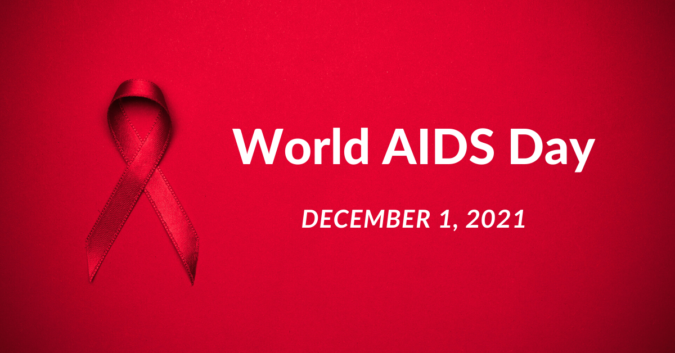Observed each year on the first day of December, World AIDS Day unites individuals from all across the globe to fight back against a common enemy: Human Immunodeficiency Virus (HIV), and the condition it causes — Acquired Immune Deficiency Syndrome, or “AIDS,” for short.
Initially created in 1988 as a way to spread educational materials regarding the cause and spread of HIV, World AIDS Day was the first-ever global health day.
Now in its 34th year, World AIDS Day continues toward its goals of:
- Bringing attention to the HIV epidemic both at home in the United States and around the world
- Generating awareness that will help to prevent HIV from spreading
- Speaking out against HIV stigma
- Supporting individuals who are living with HIV
Sponsored by the Dept. of Health and Human Services (HHS) in the United States, this year’s theme is “Ending the HIV Epidemic: Equitable Access, Everyone’s Voice.” The ultimate goal of World AIDS Day is to end the HIV epidemic through increased education, ongoing prevention efforts, and advances in medical research.
Supporting the Search for an HIV Cure
HIV impacts roughly 1.2 million people in the United States. Globally, more than 37 million people have HIV. As scientists and doctors from around the world continue to search for a cure for HIV, it is especially important that individuals and societies rally to support their research.
Currently, treatment options exist that help individuals living with HIV control and mitigate the effects of the virus. Some of the available HIV medications offer hope and are indeed helpful, while other HIV medications may create more risks than solutions.
The HIV drug Truvada®, for example, treats HIV with the active ingredient tenofovir disoproxil fumarate (TDF) — a chemical compound that, according to the National Institutes of Health’s (NIH) Office of AIDS Research, “can cause serious, life-threatening side effects.”
Among other dangerous side effects, Truvada can cause a buildup of lactic acid in the blood (lactic acidosis), as well as serious liver and kidney problems, including kidney failure.
All said, there are dozens of HIV drugs, and many of them come with risks, which is why it is critical to raise AIDS awareness and support research efforts in search of a cure.
CDC Creates #MyVoiceMyAction Initiative
For its part, the U.S. Centers for Disease Control and Prevention (CDC) will contribute to World AIDS Day through its new initiative called “My Voice My Action,” which aims to highlight the individual voices of people from across the world in their efforts to help prevent the spread of HIV.
Visit the CDC’s website to get access to free resources to share across social media platforms. The CDC maintains a number of free resources on:
- HIV stigma
- HIV testing
- HIV prevention
- HIV treatment
As the CDC says, “Every voice and every action impacts the global effort to stop the HIV epidemic.”
Be a part of the movement this year by sharing HIV-related stories and information through the hashtag #MyVoiceMyAction.
